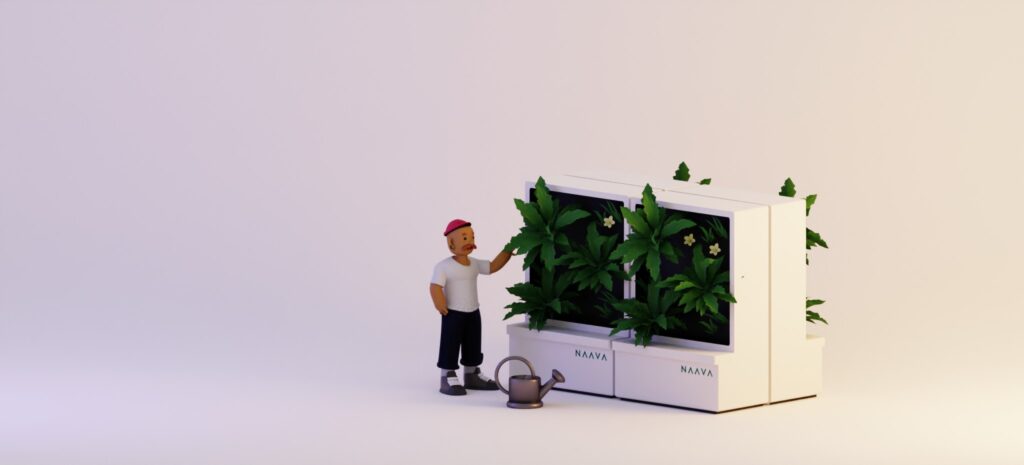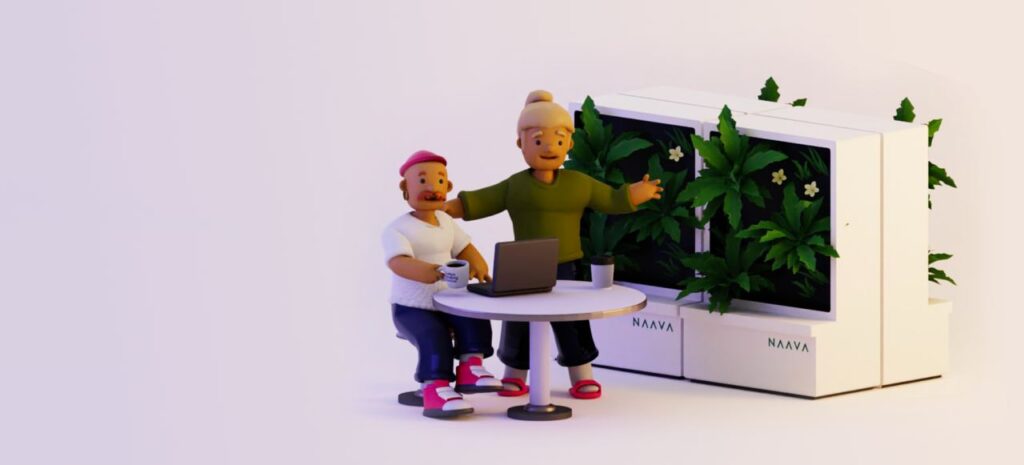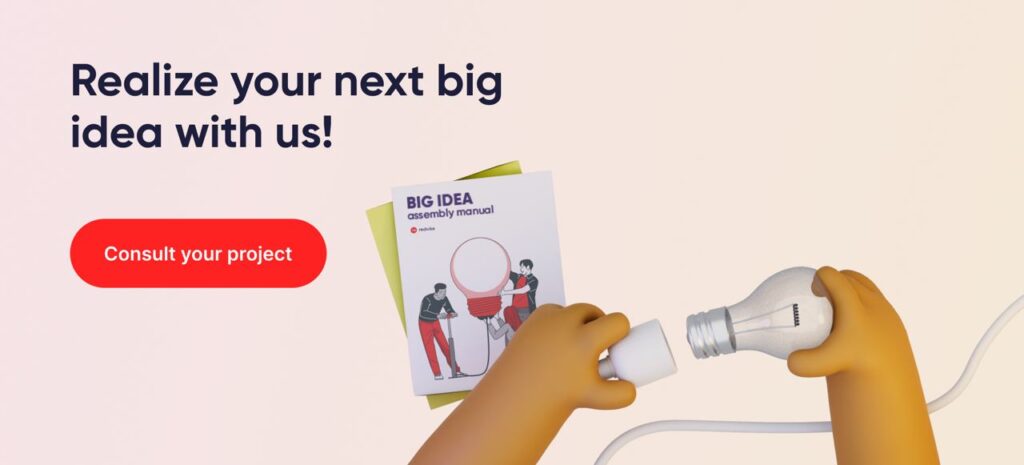Let’s start with the most obvious question – What is PropTech? The name PropTech is an amalgamation of the words “property” and “technology”, and is also commonly referred to […]
A green wall is a vertical structure covered in plant life, also referred to as “living walls” or “vertical gardens”. The greenery is often planted in a growth medium consisting of soil, stone, or water, and usually features built-in irrigation systems. These plant walls are becoming increasingly popular in offices and other indoor spaces, and not only for decorative purposes! Besides looking beautiful and adding a touch of nature in urban environments, green walls perform “biofiltration”, i.e. air purification and humidification. Additionally, plants have shown to reduce noise pollution, making for a quieter work environment. This is not to say that green walls cannot be applied to exterior surfaces – in fact, they can protect buildings from temperature fluctuations, UV radiation, and heavy rain.
So, green walls not only promote better health by improving air quality but can also reduce energy costs with their insulation qualities. But how does a vegetative system connect with software development?
Here we introduce “smart green walls” – vertical gardens that use automation and artificial intelligence to regulate the system, usually connected to a digital device that monitors its performance. According to research, regular passive green walls do not purify air effectively enough for a notable difference. On the other hand, smart green walls with active air circulation achieve this, as the wall, plants, and supporting technology are all designed for the purpose.


Today, smart green walls can be found in people’s homes, in office spaces, hotel lobbies, and even on the sides of large buildings. Until now, they were mostly incorporated as singular pieces, mainly as an interior design element. However, current technological advancements will shift to more widespread use, for example:


Naava is an award-winning Finnish living wall startup that harnesses the power of artificial intelligence to create smarter green walls. Naava’s smart green wall is used to purify indoor air with the help of nature, automation, and active air circulation. Sensors monitor the plants’ wellbeing and upload all the data to a cloud service. Based on that data, the system makes sure that the plans receive the appropriate amounts of water, nutrients, light, and rest. Artificial intelligence also predicts and adjusts its functions depending on the air humidity and outdoor air circumstances.
Naava came to us seeking to replace their outdated software system with a new front-end infrastructure that works for their internal business needs, as well as for their clients. Naava uses its technology to manage everything from monitoring green wall performance to scheduling maintenance, so a custom HealthTech solution had to be devised. The company wanted a progressive web app solution to replace the old native application. In six months we managed to deliver a HealthTech solution covering all their needs, and after two years we completed the full platform which included integrating the new front-end with the existing back-end, which manages a global client base and thousands of walls.
Our solution offers Naava’s customers the ability to monitor how their green walls improve air quality, while the maintenance and personnel side of the app has made work much easier for Naava’s employees. In fact, the app has even become a potent sales and marketing tool, with hard data showcasing the benefits of a green wall!


With the rapid technological advances and the current epidemiological conditions, it’s no wonder that more and more HealthTech solutions are being developed! Up until only a few years ago, patients were required to go for a physical exam in order to be diagnosed. A lot of patients end up having to stay in hospital for monitoring during the course of the treatment, resulting in increased healthcare costs and straining hospital capacities. Fast forward until today and what do we see? For example, in the last year and a half, demand for telehealth services – such as telemedicine, remote diagnostics, and remote therapy – has skyrocketed! With the use of machine learning, big data analysis, mobile and cloud computing, and IoT, we can revolutionize the HealthTech and healthcare industries!
The Internet of Things describes devices equipped with a sensor/radio (or another data gathering mechanism) attached to a physical object, which can then transmit the collected information with the help of the Internet. Various medical devices can now collect extremely valuable data, allowing physicians more insight into symptoms and trends which in turn enables remote care. The result is more autonomy for patients and better monitoring of often serious conditions. Increased digitization of medical devices will speed up the arrival of more and more HealthTech startups. Here are a few examples of how the internet of things-connected smart devices are facilitating medical treatment, preventing illness, and aiding healthcare.
Through the use of digital wearables, doctors can remotely track and assess a patient’s:
and many, many more bodily functions. Various apps and software exist that collect the data from the measuring device or even create reports, which can then be accessed by physicians at any time. Such software can even be programmed to recognize abnormal patterns and alert attending medical workers – allowing for faster diagnostics and proactive treatment protocols.
One example is SystemOne – an innovative medical IoT company that created a comprehensive software connecting diagnostic devices with clinicians, labs, and other medical personnel – for tracking diseases like TB, HIV, Ebola, Zika, etc. in developing countries. The company takes it a step further – implemented country-wide it can be used to track infectious diseases, contain outbreaks, and thus create conditions for prosperous economic activity.
This category encompasses technologies marketed to consumers for at-home biometric information collection. One example would be glucose monitoring devices: the latest technological advancements have come up with non-invasive, comfortable wearable devices for diabetes patients which measure and transmit glucose levels to an app on patients’ phones. An example of a specific HealthTech product is the cloud platform, by the company QuiO, that wirelessly connects various devices related to medications, activity, and health for patients with chronic illnesses. Users can also get personalized tips on dealing with conditions and have opportunities to anonymously participate in research studies.
Another subcategory here is infant monitoring. HealthTech companies such as Owlet and Sproutling allow parents to track their children’s vital signs in real-time. By using wearable bands, parents can monitor their baby’s sleep habits and conditions, blood oxygen, heart rate, temperature, etc. Similarly, such devices are also used for monitoring and assisting the elderly. The available technology ranges from wearable pendants that can detect a fall and alert family or caregivers, to more sophisticated home monitoring systems that learn an individual’s movements and habits. Thus, if there is a major change or if no movement is detected for an abnormal amount of time, a caregiver can be alerted, or emergency services can be called.
One of the original and fastest-growing markets in consumer wearables is the fitness-watch market. While not originally designed as medical devices, fitness wearables such as smartwatches are becoming increasingly powerful HealthTech tools. Fitness trackers like the ones from top HealthTech company Fitbit have the ability to measure and track heart rate, sleep, oxygen levels, and physical activity – which users can then view of the app. Users can also manage their diet and get movement reminders through the app interface and be motivated to better health decisions based on the data. With some simple sensors and some clever bit of coding, the app can even call an ambulance in case of emergencies!
Many patients have trouble sticking to a medication schedule, whether simply forgetting or trying to avoid it. IoT devices such as “smart pill dispensaries” can be pre-programmed with the required medicine dosage, and send out reminders to the patient or caregiver when it’s time to take the medication. This is especially important for the elderly who are often prescribed a variety of different medications to be taken at different timings. Doctors can also be informed of missed doses and can take the necessary course correction.
Devices for medication tracking and delivery can be extremely helpful for addiction management patients. For example, HealthTech company Chrono Therapeutics produces medication patches that deliver drugs transdermally at a steady pace throughout the day. By adjusting medication levels depending on the user’s needs, strong withdrawal symptoms are reduced or avoided – making the addict more motivated to continue the course to quitting.